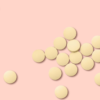How Much Water to Drink to Help Manage Yeast Infections
Yeast infections can be uncomfortable and disruptive, leading many people to seek home remedies to alleviate symptoms and support recovery. While water is essential for overall health, can it help flush out a yeast infection? In this article, we’ll explore the role of hydration in managing yeast infections and how much water you should aim to drink for this purpose.
Understanding Yeast Infections
Yeast infections, such as vaginal yeast infections caused by Candida species, can occur in various parts of the body. They often result in symptoms like itching, burning, and abnormal discharge. Managing these infections typically involves antifungal medications prescribed by a healthcare provider.
The Role of Hydration
While staying hydrated is vital for good health, including maintaining proper bodily functions and supporting the immune system, it’s important to clarify that water alone cannot “flush out” a yeast infection. Yeast infections are caused by an overgrowth of yeast, and addressing them usually requires specific antifungal treatments.

However, proper hydration can indirectly contribute to managing yeast infections by:
- Supporting Immune Function: Staying well-hydrated helps the immune system function optimally, which can aid in fighting off infections, including yeast infections.
- Balancing the Body: Drinking enough water helps maintain a balanced internal environment, which can be helpful when dealing with health issues.
- Reducing Discomfort: Hydration can help alleviate some of the discomfort associated with yeast infections, such as dryness and itching.
How Much Water Should You Drink?
The amount of water you need to stay adequately hydrated can vary based on factors like your age, sex, activity level, and overall health. There is no specific recommendation for water intake solely to address yeast infections. However, aiming to meet your daily water needs for general health can be beneficial.
A common guideline is to aim for about 8 cups (64 ounces) of water per day, but individual requirements may be more or less. Listen to your body’s signals for thirst and adjust your intake accordingly. In hot weather or during physical activity, you may need more water to stay hydrated.
Additional Considerations
While water alone won’t cure a yeast infection, you can take additional steps to manage the condition:
- Antifungal Medications: If you suspect you have a yeast infection, consult a healthcare provider for an accurate diagnosis and appropriate treatment, which usually involves antifungal medications.
- Maintain Good Hygiene: Practice good hygiene to keep the affected area clean and dry. Avoid using scented products, as they can exacerbate symptoms.
- Avoid Irritants: Stay away from potential irritants like douches, tampons, or tight-fitting clothing that may worsen symptoms.
- Probiotics: Some people find relief from yeast infections by taking probiotics or consuming yogurt with live cultures, which can help promote a healthy balance of microorganisms in the body.
While drinking enough water is essential for overall health and can indirectly support the body’s ability to combat infections, it’s not a standalone remedy for yeast infections. If you suspect you have a yeast infection, consult a healthcare provider for proper diagnosis and treatment. Hydrating adequately, practicing good hygiene, and following medical advice can help you manage the discomfort and recover more comfortably.


